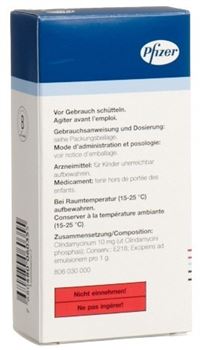The results calls from the medical technology sector began two weeks ago, raising a crucial question: to what extent will the new pricing policies of the U.S. administration impact companies?
The response from many companies is unequivocal, announcing costs in the hundreds of millions of dollars.
Johnson & Johnson projects a loss of $400 million in 2025, primarily in its medical device segment.
While Boston Scientific anticipates an impact of $200 million, and Abbott mentions a bill of “several hundred million dollars” due to the new tariffs, the industry seems resilient. Despite these financial pressures, several large medical device companies have not downgraded their annual forecasts, some even raising them. Boston Scientific, for example, stated that the bulk of the impact will be felt in the second half of the year. This period remains to be closely monitored, especially with the financial results of GE Healthcare, BD, Stryker, and Dexcom scheduled for this week. MedTech Dive continues to closely follow the tariff repercussions on the sector. Stay informed with our coverage of the latest results from this season.

The tariffs imposed by the Trump administration have profoundly reshaped the economic landscape for many industries, including the medical technology sector (medtech). These tariffs, primarily aimed at Canada, Mexico, and China, have created significant financial challenges for medtech companies, jeopardizing their profitability and global competitiveness.
What are the tariffs imposed by Trump and their objectives?
In effect since the beginning of the Trump administration, the tariffs are primarily aimed at protecting domestic industries by making imported products more expensive. According to Global Santé, these tariffs specifically target Canada, Mexico, and China, three key countries in the global medical technology supply chain. The main objective is to reduce the trade deficit and promote local production by encouraging companies to relocate their operations.
However, the actual impact of these measures often exceeds the initial intentions. Medtech companies, dependent on imported components and technologies, are experiencing increased production costs, which can translate into higher prices for end consumers and reduced profit margins.
How do the tariffs affect the financial results of medtech companies?
Several medtech companies have already felt the effects of the tariffs imposed by Trump. For example, Johnson & Johnson has projected a loss of $400 million in 2025, primarily in its medical devices segment. Boston Scientific, for its part, estimates that the tariffs will cost it about $200 million. Even Abbott, while not providing a specific figure, indicated that the surcharges would represent a cost of “several hundred million dollars.”
These cost increases may lead to strategic adjustments, such as reducing R&D investments, eliminating certain jobs, or even scaling back in some international markets. Moreover, the uncertainty surrounding tariff policy can hinder companies’ investment decisions, thereby slowing innovation in the sector.
What are the reactions of medtech companies to the tariffs?
In the face of these challenges, medtech companies are adopting various strategies to mitigate the impact of the tariffs. Some are choosing to diversify their supply sources, thereby reducing their dependence on countries subject to surcharges. Others are investing in automation and operational efficiency to offset the additional costs incurred by the tariffs.
Furthermore, companies like GE Healthcare and Dexcom plan to unveil their latest financial results despite the challenges posed by tariffs. These companies aim to demonstrate their resilience by maintaining or even increasing their growth forecasts, despite current economic constraints.
The CEO of Dadvamed, for example, has advocated for an exemption from Trump’s tariffs to support the medical technology industry. This request underscores the need for ongoing dialogue between governments and companies to find balanced solutions that promote both economic growth and international competitiveness.
What are the forecasts for the medtech sector in a tariff context?
Despite the present challenges, the medtech sector continues to show signs of resilience. Boston Scientific indicated that the majority of the impact of the tariffs will be felt in the second half of the year, suggesting an adjustment period for companies. Additionally, some companies have not downgraded their annual forecasts, with some even raising them, demonstrating a persistent confidence in the sector’s ability to overcome current obstacles.
The tracking by Global Santé of tariff impacts shows that leading companies such as BD and Stryker continue to operate and invest despite economic uncertainties. Innovation remains a key driver, with companies selected for international events such as the Global MedTech Show 2025, illustrating the ongoing commitment of the sector to development and technological advancement.
How do the tariffs influence the medtech supply chain?
The Trump tariffs have also disrupted the global supply chains of medtech companies. According to an article by Global Santé, these surcharges have threatened the integrity of production chains, making operations more costly and less predictable. Companies now have to navigate an environment where costs are fluctuating, complicating long-term planning and inventory management.
Moreover, delays in regulatory review timelines, as anticipated by Shuren, further complicate the situation. These delays slow the introduction of new products to the market, thereby delaying return on investment and impacting companies’ competitiveness in a globalized market.
What are the advantages and disadvantages of adaptation strategies?
Adopting adaptation strategies to the tariffs imposed by Trump has both advantages and disadvantages for medtech companies. Diversifying supply sources can reduce dependence on specific markets, offering greater flexibility in the event of new trade tensions. However, this may also require significant investments and increased complexity in supplier management.
Investing in operational efficiency and automation allows companies to offset the additional costs associated with tariffs. This approach can improve productivity and reduce long-term costs, but it can also lead to temporary disruptions and require retraining of staff.
Finally, seeking to support calls for tariff exemptions, as the CEO of Dadvamed has done, may offer a potential short-term solution. However, this heavily depends on political will and may not be a sustainable long-term solution.
What are the possible futures for medtech companies in light of the tariffs?
In the future, medtech companies will need to continue adapting to an ever-changing economic environment. Financial resilience and the ability to innovate will remain crucial elements for navigating the challenges posed by the tariffs. The ability to anticipate and respond quickly to changes in trade policy will be decisive in maintaining competitiveness in the global market.
Moreover, the focus on technology and innovation will enable medtech companies to develop more efficient products and solutions, thereby justifying the additional costs incurred by the tariffs. Engagement in international collaborations and strategic partnerships could also provide strong foundations for sustained growth despite challenging economic conditions.
Finally, continuous monitoring of tariff policies and active participation in industry discussions will allow medtech companies to better anticipate changes and proactively prepare for them, ensuring their sustainability and future success.
The tariffs imposed by the Trump administration have undeniably had a significant impact on the financial results of medtech companies. However, despite these challenges, the sector continues to demonstrate remarkable resilience and adaptability. By diversifying their sources of supply, investing in operational efficiency, and pursuing technological innovation, medtech companies are well-equipped to navigate this complex economic landscape and continue to thrive in an evolving global environment.













